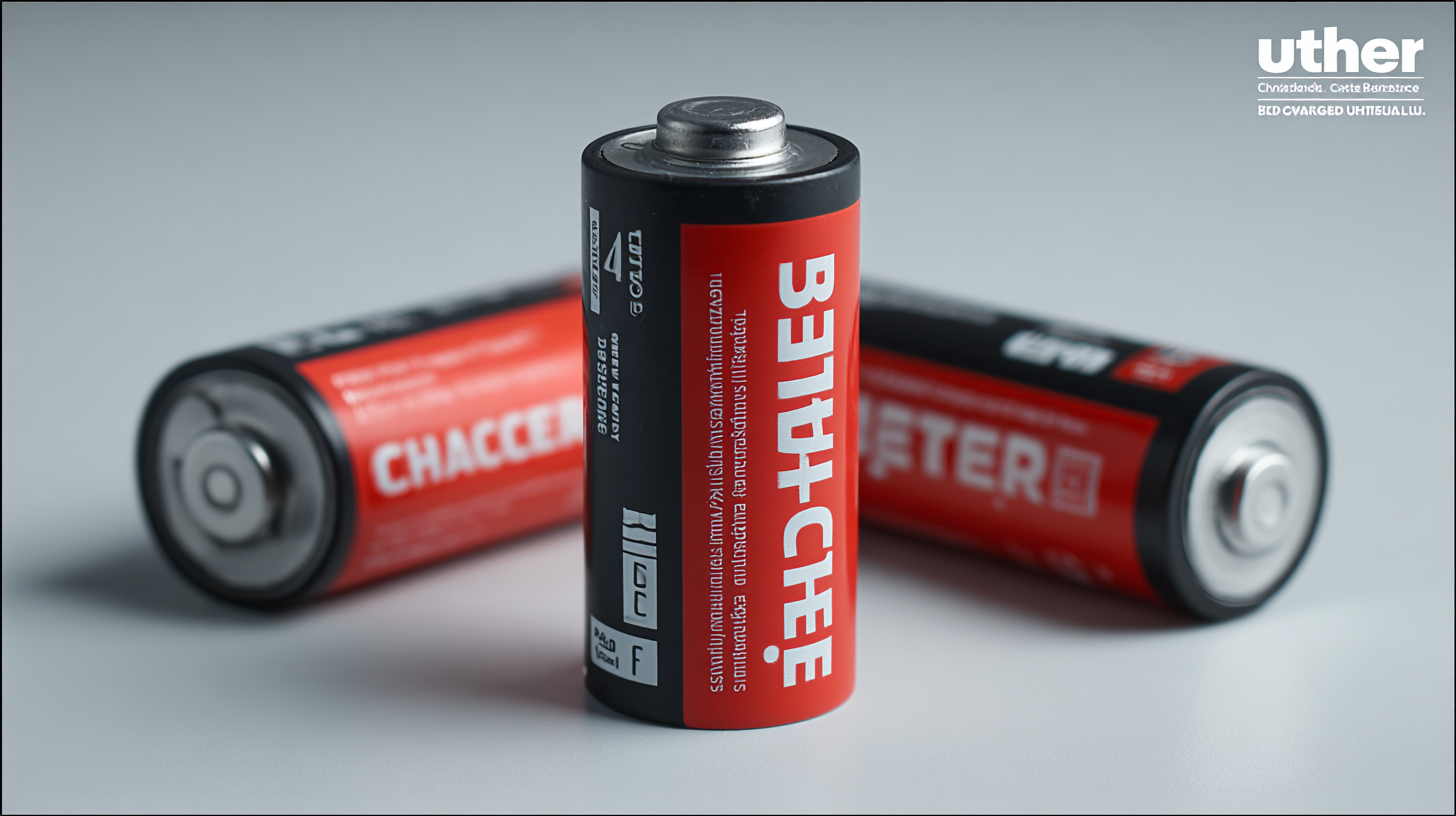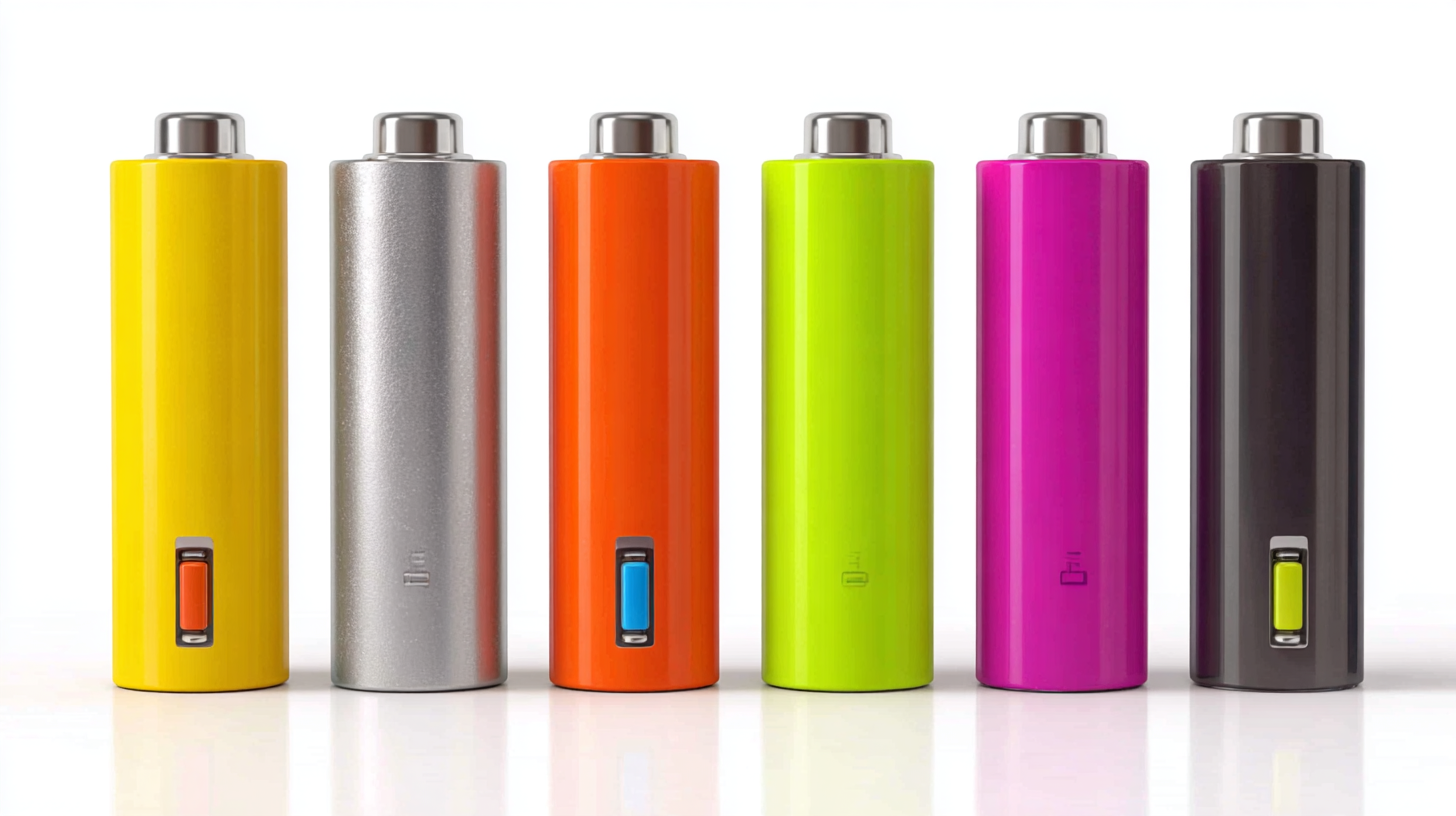Ultimate Guide to Choosing the Best Rechargeable Lithium Batteries for Your Devices: Expert Insights & Data
In today's tech-driven world, the demand for efficient and sustainable power solutions is at an all-time high, making Rechargeable Lithium Batteries an essential choice for many devices. As we rely increasingly on gadgets ranging from smartphones to electric vehicles, understanding how to select the best rechargeable lithium batteries becomes crucial. This ultimate guide is designed to equip you with expert insights and valuable data, ensuring that you make informed decisions that enhance the performance and longevity of your devices. We will delve into the key factors to consider when choosing rechargeable lithium batteries, including capacity, cycle life, safety features, and compatibility with your devices. With these tips in hand, you will be empowered to navigate the myriad options available, simplifying the process and optimizing your power solutions for everyday use.

Key Considerations for Selecting the Right Lithium Battery for Your Device
When selecting the right rechargeable lithium battery for your devices, there are several key considerations to keep in mind. First and foremost, you should evaluate the compatibility of the battery with your specific device. Different devices may require varying voltage levels and capacities, so it’s crucial to check the manufacturer's specifications. Using a battery that doesn’t meet these requirements can lead to suboptimal performance or even damage to your device.
Another important factor is the battery's charge cycle life, which indicates how many times it can be charged and discharged before its capacity diminishes significantly. Higher quality batteries typically offer a longer life span, making them a more economical and environmentally friendly choice in the long run. Additionally, consider the storage capacity, rated in milliamp hours (mAh); a higher mAh rating means longer usage times between charges. Lastly, always research brands and read reviews to ensure you choose a reputable manufacturer known for safety and reliability.

Industry Applications of Rechargeable Lithium Batteries: Real-World Examples
Rechargeable lithium batteries are increasingly vital in various industry applications, particularly in the electric vehicle (EV) sector. As decarbonization efforts accelerate, manufacturers and consumers alike are investing in advanced battery technologies that drive efficiency and performance. The ongoing research into the aging mechanisms of lithium-ion batteries is crucial, allowing for the optimization of their lifespan and reliability in automotive applications. Techniques such as nuclear magnetic resonance spectroscopy offer new insights into the chemical evolution within battery cells, paving the way for more durable energy solutions.
Moreover, the emergence of innovative alternatives to lithium-ion batteries reflects a dynamic shift in energy storage technologies. These alternatives not only promise improved safety and efficiency but also seek to address sustainability challenges associated with traditional lithium-ion systems. For instance, initiatives around battery recycling and repurposing are vital as the global EV market expands. Developing tools like image datasets for detecting batteries in electronic waste underscores the industry's commitment to sustainability and effective resource management. The intersection of machine learning and physics stands to enhance battery management practices, ensuring that the future of rechargeable batteries is both advanced and environmentally conscious.
Ultimate Guide to Choosing the Best Rechargeable Lithium Batteries for Your Devices
| Application | Battery Capacity (mAh) | Voltage (V) | Chemistry Type | Cycle Life (Cycles) |
|---|---|---|---|---|
| Smartphones | 3000 | 3.85 | Li-ion | 500 |
| Laptops | 5000 | 11.1 | Li-polymer | 800 |
| Electric Vehicles | 60000 | 36 | Li-ion | 1200 |
| Digital Cameras | 2000 | 7.4 | Li-ion | 300 |
| Power Tools | 5000 | 18 | Li-ion | 1000 |
Data-Driven Insights: Performance Metrics of Popular Lithium Batteries
When it comes to selecting the best rechargeable lithium batteries for your devices, examining performance metrics can provide invaluable insights. Not all lithium batteries are created equal; variations in capacity, charge cycles, and discharge rates can significantly impact usability. For instance, a battery with a higher milliampere-hour (mAh) rating typically offers longer operating times for devices, making it essential to consider this stat when making a choice. Testing various models often reveals surprising differences in longevity and efficiency, which can determine how well a battery meets your specific needs.
Data-driven analysis also extends to charge cycles, a critical metric that indicates how many times a battery can be recharged before its capacity diminishes substantially. Quality batteries often sustain up to 500 to 1000 charge cycles without losing performance. Additionally, discharge rates are vital; some batteries provide greater power output for demanding devices while others focus on energy conservation. Evaluating these metrics side-by-side allows consumers to make well-informed decisions, ensuring they choose lithium batteries that not only perform efficiently but also complement their devices perfectly.
Top Reasons to Choose Rechargeable Lithium Batteries Over Standard Options
When it comes to powering devices, rechargeable lithium batteries have emerged as a superior choice compared to standard alkaline options. Industry reports indicate that lithium batteries can offer up to 2-3 times the energy density of traditional batteries, leading to longer usage times and enhanced performance. According to a recent study by the National Renewable Energy Laboratory, lithium-ion batteries can maintain about 80% of their capacity even after 500 charge cycles, while alkaline batteries can only be used once, resulting in significantly higher costs and waste in the long run.
Moreover, the environmental impact of choosing rechargeable lithium batteries is substantial. The International Energy Agency reports that switching to rechargeable options can reduce battery waste by up to 90%, as these batteries can be recharged hundreds to thousands of times over their lifespan. This reduction in waste not only contributes to a cleaner environment but also supports sustainable practices, making lithium batteries an ideal choice for eco-conscious consumers. As technology evolves, the transition towards rechargeable lithium solutions stands out as a forward-thinking move for both personal and environmental well-being.
Battery Capacity Comparison: Rechargeable Lithium vs Standard Alkaline
This chart compares the capacity of rechargeable lithium batteries to that of standard alkaline batteries. As shown, rechargeable lithium batteries typically offer a higher capacity, which can result in longer usage times for devices.
Expert Tips for Maximizing the Lifespan and Efficiency of Lithium Batteries
When it comes to maximizing the lifespan and efficiency of rechargeable lithium batteries, the practices you adopt play a crucial role. One key piece of advice is to avoid letting your battery drop below 20%. Regularly discharging your battery to lower percentages can lead to detrimental effects on its health, reducing its overall capacity over time. Aim to keep your battery charge between 20% and 80% to ensure optimal longevity.
Additionally, consider the charging habits you develop. Instead of waiting for the battery to deplete completely, charge your device periodically to keep it topped up. This not only stabilizes the battery's charge cycle but also minimizes the stress imposed on the cells. For devices requiring extensive use, such as hybrid vehicles or robotic vacuums, establishing a routine charging practice can significantly enhance performance and extend battery life.
Lastly, invest in proper care techniques. Just like any other electronic device, lithium batteries benefit from temperature management. Avoid exposing your devices to extreme temperatures, as both heat and cold can impact battery efficiency. By following these expert tips, you can ensure your rechargeable lithium batteries remain healthy, performing at their best for years to come.

